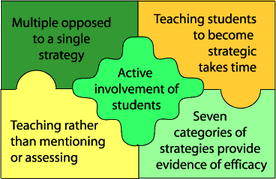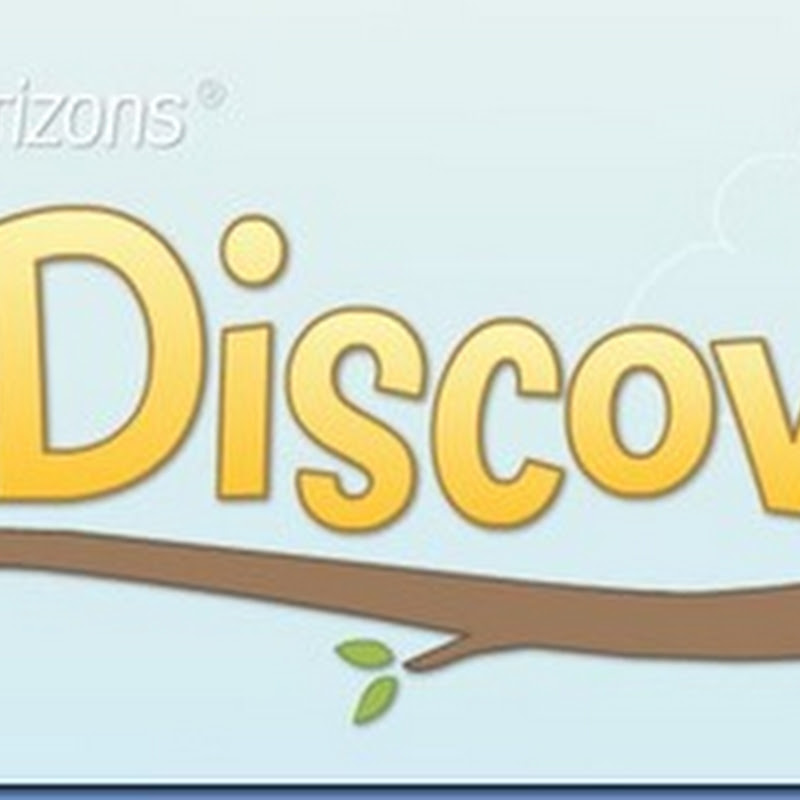We got these over Christmas from Nana and Papa...they are great, Great, GREAT! Both my Tiny Queen Bee and Little Engineer love reading these books. They have built in 'finder' holes that are not easily broken, torn, or anything else little hands can do to books. Having something for her to do that's hands-on reading is awesome.
by Just for Kids PRESS, A Charles Reasoner Book
What's the point in teaching WH questions to a child who is learning to speak and pre-ker? Because while they are learning to read at age 4-5 they will already understand and use their brain strategically for comprehension.
Teaching Reading Comprehension
As Steve mentioned on the Teaching Reading Page, comprehension is the only reason for reading. Without comprehension, reading is a frustrating, pointless exercise in word calling. It is no exaggeration to say that how well students develop the ability to comprehend what they read has a profound effect on their entire lives. A major goal of teaching reading comprehension, therefore, is to help students develop the knowledge, skills, and experiences they must have if they are to become competent and enthusiastic readers.
For many years, teaching reading comprehension was based on a concept of reading as the application of a set of isolated skills such as identifying words, finding main ideas, identifying cause and effect relationships, comparing and contrasting, and sequencing. Teaching reading comprehension was viewed as a mastery of these skills. Comprehension instruction followed what the study called mentioning, practicing, and assessing procedure where teachers mentioned a specific skill that students were to apply, had students practice the skill by completing workbook pages, then assessed them to find out if they could use the skill correctly. Instruction did little to help students learn how or when to use the skills, nor was is ever established that this particular set of skills enabled comprehension.

Taken from http://reading.uoregon.edu/comp/comp_features.php
Research indicates that we build comprehension through the teaching of comprehension strategies and environments that support an understanding of text. It is important for educators and parents to teach children active strategies and skills to help them become active, purposeful readers. Teaching reading comprehension is an active process of constructing meaning, not skill application. The act of constructing meaning is:
Interactive – It involves not just the reader, but the text and the context in which reading takes place.
Strategic – Readers have purposes for their reading and use a variety of strategies as they construct meaning.
Adaptable – Readers change the strategies they use as they read different kinds of text or as they read for different purposes.
What Do Good Readers Do?
Before reading, good readers tend to set goals for their reading.
During reading, good readers read words accurately and quickly, while dealing with meanings of words.
Good readers are selective as they read.
Good readers use their background knowledge (schema) to create mental images, ask questions, and make inferences.
Good readers monitor their comprehension as they read.
How Do Poor Readers Differ From Good Readers?
Poor readers do not have sufficient awareness to develop, select, and apply strategies that can enhance their comprehension.
Poor readers rarely prepare before reading.
During reading, poor readers may have difficulty decoding, reading too slowly, and lack fluency.
Poor readers often lack sufficient background knowledge and have trouble making connections with text.
Some poor readers are unaware of text organization.
After reading, poor readers do not reflect on what they have just read.
READING COMPREHENSION STRATEGIES
Making Connections
Creating Mental Images (Visualizing)
Questioning
Inferring
Evaluating (Determining Importance)
Synthesizing
Steve and I use the lessons found in Comprehension Connections by Tanny McGregor, Reading with Meaning by Debbie Miller, and 7 Keys to Comprehension by Susan Zimmerman and Chryse Hutchins for teaching reading comprehension strategies.
METACOGNITION & SCHEMA (BACKGROUND KNOWLEDGE)
Although "metacognition" and "schema" aren't comprehension strategies, they are very important for teaching reading comprehension strategies. John Flavell used the term “metacognition” in the 70’s and believed we were capable of monitoring our own thoughts. Simply put, metacognition means to think about your thinking. In her book, Comprehension Connections, Tanny McGregor uses a mathematical equation to teach this concept to her students that I’ve also used in my classroom: Text + Thinking = Real Reading When you read text and think at the same time you are “real reading”…or being metacognitive! In 7 Keys to Comprehension, Zimmerman & Hutchins define schema (background knowledge) as the meaning you get from a piece of literature that is intertwined with the meaning you bring to it. A layering occurs, a weaving of past and present, an amalgam of old and new ideas and experiences. When you read, sometimes you activate your schema or you build upon it. A previous student of mine described schema simply as “everything that is stuck in your brain”…I like that definition!
As Tanny mentions in her book, it’s hard teaching reading comprehension strategies without teaching your children about metacognition and schema. Look for the activities that Steve and I use coming soon on the Comprehension Activities Page!
MAKING CONNECTIONS
Children make personal connections with the text by using their schema. There are three main types of connections we can make during reading:
Text-to-Self: Refers to connections made between the text and the reader's personal experience.
Text-to-Text: Refers to connections made between a text being read to a text that was previously read.
Text-to-World: Refers to connections made between a text being read and something that occurs in the world.
CREATING MENTAL IMAGES (VISUALIZING)
This strategy involves the ability of readers to make mental images of a text as a way to understand processes or events they encounter during reading. This ability can be an indication that a reader understands the text. Some research suggests that readers who visualize as they read are better able to recall what they have read than those who do not visualize.
QUESTIONING
This strategy involves readers asking themselves questions throughout the reading of text. The ability of readers to ask themselves relevant questions as they read is especially valuable in helping them to integrate information, identify main ideas, and summarize information. Asking the right questions allows good readers to focus on the most important information in a text.
INFERRING
Authors do not always provide complete descriptions of, or explicit information about a topic, setting, character, or event. However, they often provide clues that readers can use to “read between the lines”—by making inferences that combine information in the text with their schema.
EVALUATING (DETERMINING IMPORTANCE)
Determining importance has to do with knowing why you’re reading and then making decisions about what information or ideas are most critical to understanding the overall meaning of the piece.
SYNTHESIZING
Synthesizing is the process of ordering, recalling, retelling, and recreating into a coherent whole the information with which our minds are bombarded everyday. Synthesizing is closely linked to evaluating. Basically, as we identify what’s important, we interweave our thoughts to form a comprehensive perspective to make the whole greater than just the sum of the parts.
Also for my kindergartener check out this helpful short article on why it is helpful to teach WH questions to a child with a short attention span.
http://www.autismunited.org/blog/understanding-who-what-when-where-why-and-how-questions-80599.html
by Just for Kids PRESS, A Charles Reasoner Book
What's the point in teaching WH questions to a child who is learning to speak and pre-ker? Because while they are learning to read at age 4-5 they will already understand and use their brain strategically for comprehension.
Teaching Reading Comprehension
TEACHING READING COMPREHENSION
A Look At Reading Comprehension Strategies
As Steve mentioned on the Teaching Reading Page, comprehension is the only reason for reading. Without comprehension, reading is a frustrating, pointless exercise in word calling. It is no exaggeration to say that how well students develop the ability to comprehend what they read has a profound effect on their entire lives. A major goal of teaching reading comprehension, therefore, is to help students develop the knowledge, skills, and experiences they must have if they are to become competent and enthusiastic readers.
For many years, teaching reading comprehension was based on a concept of reading as the application of a set of isolated skills such as identifying words, finding main ideas, identifying cause and effect relationships, comparing and contrasting, and sequencing. Teaching reading comprehension was viewed as a mastery of these skills. Comprehension instruction followed what the study called mentioning, practicing, and assessing procedure where teachers mentioned a specific skill that students were to apply, had students practice the skill by completing workbook pages, then assessed them to find out if they could use the skill correctly. Instruction did little to help students learn how or when to use the skills, nor was is ever established that this particular set of skills enabled comprehension.

Taken from http://reading.uoregon.edu/comp/comp_features.php
Research indicates that we build comprehension through the teaching of comprehension strategies and environments that support an understanding of text. It is important for educators and parents to teach children active strategies and skills to help them become active, purposeful readers. Teaching reading comprehension is an active process of constructing meaning, not skill application. The act of constructing meaning is:
What Do Good Readers Do?
How Do Poor Readers Differ From Good Readers?
READING COMPREHENSION STRATEGIES
Steve and I use the lessons found in Comprehension Connections by Tanny McGregor, Reading with Meaning by Debbie Miller, and 7 Keys to Comprehension by Susan Zimmerman and Chryse Hutchins for teaching reading comprehension strategies.
METACOGNITION & SCHEMA (BACKGROUND KNOWLEDGE)
Although "metacognition" and "schema" aren't comprehension strategies, they are very important for teaching reading comprehension strategies. John Flavell used the term “metacognition” in the 70’s and believed we were capable of monitoring our own thoughts. Simply put, metacognition means to think about your thinking. In her book, Comprehension Connections, Tanny McGregor uses a mathematical equation to teach this concept to her students that I’ve also used in my classroom: Text + Thinking = Real Reading When you read text and think at the same time you are “real reading”…or being metacognitive! In 7 Keys to Comprehension, Zimmerman & Hutchins define schema (background knowledge) as the meaning you get from a piece of literature that is intertwined with the meaning you bring to it. A layering occurs, a weaving of past and present, an amalgam of old and new ideas and experiences. When you read, sometimes you activate your schema or you build upon it. A previous student of mine described schema simply as “everything that is stuck in your brain”…I like that definition!
As Tanny mentions in her book, it’s hard teaching reading comprehension strategies without teaching your children about metacognition and schema. Look for the activities that Steve and I use coming soon on the Comprehension Activities Page!
MAKING CONNECTIONS
Children make personal connections with the text by using their schema. There are three main types of connections we can make during reading:
CREATING MENTAL IMAGES (VISUALIZING)
This strategy involves the ability of readers to make mental images of a text as a way to understand processes or events they encounter during reading. This ability can be an indication that a reader understands the text. Some research suggests that readers who visualize as they read are better able to recall what they have read than those who do not visualize.
QUESTIONING
This strategy involves readers asking themselves questions throughout the reading of text. The ability of readers to ask themselves relevant questions as they read is especially valuable in helping them to integrate information, identify main ideas, and summarize information. Asking the right questions allows good readers to focus on the most important information in a text.
INFERRING
Authors do not always provide complete descriptions of, or explicit information about a topic, setting, character, or event. However, they often provide clues that readers can use to “read between the lines”—by making inferences that combine information in the text with their schema.
EVALUATING (DETERMINING IMPORTANCE)
Determining importance has to do with knowing why you’re reading and then making decisions about what information or ideas are most critical to understanding the overall meaning of the piece.
SYNTHESIZING
Synthesizing is the process of ordering, recalling, retelling, and recreating into a coherent whole the information with which our minds are bombarded everyday. Synthesizing is closely linked to evaluating. Basically, as we identify what’s important, we interweave our thoughts to form a comprehensive perspective to make the whole greater than just the sum of the parts.
Also for my kindergartener check out this helpful short article on why it is helpful to teach WH questions to a child with a short attention span.
http://www.autismunited.org/blog/understanding-who-what-when-where-why-and-how-questions-80599.html





















No comments:
Post a Comment